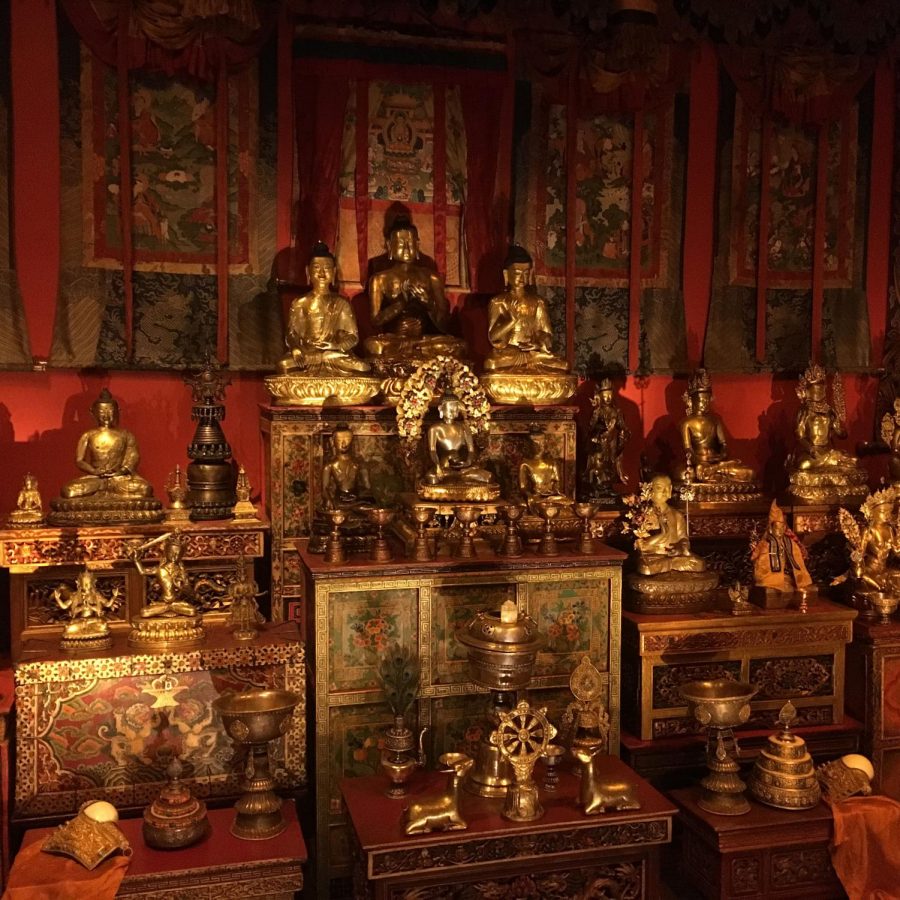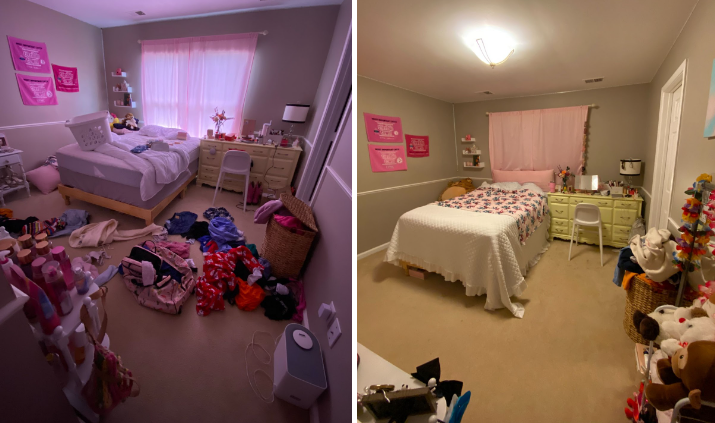The Freer Gallery has reopened after undergoing renovations
Photo courtesy of Anya Hawkins
The Tibetan Buddhist Shrine Room consists of different statues and artwork that allows visitors to feel as though they were visiting Tibet.
November 30, 2017
The Freer Gallery in D.C has finally reopened after an 18-month renovation.
The historic gallery was founded by Charles Lang Freer, who believed in a universal language of beauty and cultural diversity. Freer collected art from all over the world, focusing on Asian artwork. Freer mixed artwork from all time periods, intrigued by Asian arts refinement and beauty. He donated his collection to the Smithsonian, creating a museum that has been open since 1923. Now it has been renovated to more effectively show off his collection.
The gallery includes Asian art dating back to the Neolithic times, buts its slogan “Where Asia meets America” suggests its diversity. The gallery contains art from China, India, Japan, the Islamic World, and the Americas.
After the renovation, the gallery has been opened up dramatically. The display rooms are neat and well kept. The gallery contains high ceilings and has plenty of space to display all of the artwork. In the center of the museum is a beautiful courtyard, giving the museum a very elegant, sophisticated feel.
Each gallery room has artwork from different countries. The China gallery contains unique Chinese art like ceramics, Chinese scripts, and poetry. One highlight from this section is the Peacock Room, a room of blue and gold filled with Chinese ceramics and peacock imagery. The Peacock Room embodies the belief that “all works of art go together, whatever their period.”
Although the gallery contains artwork from all over the world, it does a very successful job of blending cultures and artwork together by highlighting common themes, such as Buddhism. Many of the galleries display different paintings or sculptures of the Buddha and explore how each country viewed him differently. For example, the exhibit “Encountering the Buddha” that gives an enriching outlook on Buddhist influences on different cultures. Inside this exhibit is the Tibetan Buddhist Shrine Room where the viewers can experience Tibetan Buddhist art. The shrine is unlike anything else and allows the viewers to feel as if they were stepping into Tibet. The walls are covered in gold Buddhist statues surrounded by Tibetan artwork including tapestry and large crates.
The India Subcontinent exhibits contain an array of Indian artwork, sculptures, and jewelry. Most of the artwork came from the Mughal rule in India (1526-1858), which had very luxurious and sophisticated art. Most of the artwork contains elements of from Buddhism and Hinduism.
The reopening of the Freer Gallery offers a newer, more complete look at Asian arts. Each exhibit offers something different and displays artwork from throughout Asia’s history.







![According to the FCPS Restorative Justice Brochure, restorative justice comes with seven primary goals. Part of building the welcoming community comes through the class circle process. “It’s voluntary and everything that is said there is confidential,” said counselor Monica Hayes. “It’s the beginning of those [strong] relationships [in the community].”](https://theoracleonline.org/wp-content/uploads/2024/04/unnamed-28.png)







